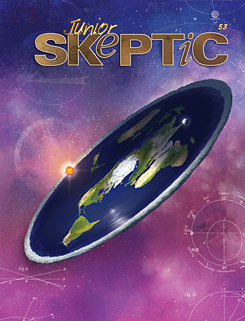
Cover of Junior Skeptic 53, bound inside Skeptic Vol. 19, No. 4. Subscribe to Skeptic
In recent months I’ve been hard at work on a three-part series of Junior Skeptic articles exploring fringe theories regarding the shape of the Earth. The issue on newsstands now considers the peculiar history of claims that our world is as flat as a pancake. Our upcoming issue considers the (surprisingly) much more reputable history of hollow-Earth thinking through to the end of the 19th century. To complete the series, I am working now on an issue about 20th century hollow-Earth beliefs with their frankly creepy intersections with conspiracy theories, flying saucers, Nazis, and madness. (Subscribe to Skeptic here.)
These stories about radically distorted Earths are a lot of fun to research, and to tell, because of the tension between the preposterousness of these ideas and the sincerity, slipperiness and passion of the arguments used to support them. To look inside such beliefs is to visit alien worlds. And when on such strange journeys, there are few things more intriguing than trail-markers which tell us people we recognize have, like Arne Saknussemm, passed this way before.
I adore the 10-page Junior Skeptic format, but the limited space and young audience do often force me to leave wonderful tangential material on the cutting room floor. One of the most painful of those cuts from the story of the Flat Earth? Once upon a time, this topic was tackled by the author of Animal Farm and Nineteen Eighty-Four.

George Orwell (1933). Via Wikimedia Commons.
George Orwell (Eric Arthur Blair) is best remembered for his politically-charged satire, science fiction, and social commentary journalism. But he was also a noted literary critic, and wrote as well on a variety of general interest topics. In a 1946 article for London’s Tribune, for example, he wrote a reflection on the plight of the layperson when confronting pseudoscience and claims to scientific truth. He began with this provocative question:
Just why do we believe that the earth is round? I am not speaking of the few thousand astronomers, geographers and so forth who could give ocular proof, or have a theoretical knowledge of the proof, but of the ordinary newspaper-reading citizen, such as you or me.
I know from my Junior Skeptic research that England has a lengthy tradition—old news in Orwell’s time, but not gone even today—of flat-Earth advocacy which bewildered the public with just that question. I also know that answers to that challenge have been known since the days of Aristotle. Orwell knew those answers, and gave a good accounting of them:
As for the Flat Earth theory, I believe I could refute it. If you stand by the seashore on a clear day, you can see the masts and funnels of invisible ships passing along the horizons. This phenomenon can only be explained by assuming that the earth’s surface is curved. But it does not follow that the earth is spherical. Imagine another theory called the Oval Earth theory, which claims that the earth is shaped like an egg. What can I say against it?
Against the Oval Earth man, the first card I can play is the analogy of the sun and moon. The Oval Earth man promptly answers that I don’t know, by my own observation, that those bodies are spherical. I only know that they are round, and they may perfectly well be flat discs. I have no answer to that one. Besides, he goes on, what reason have I for thinking that the earth must be the same shape as the sun and moon? I can’t answer that one either.
My second card is the earth’s shadow: when cast on the moon during eclipses, it appears to be the shadow of a round object. But how do I know, demands the Oval Earth man, that eclipses of the moon are caused by the shadow of the earth? The answer is that I don’t know, but have taken this piece of information blindly from newspaper articles and science booklets.
Defeated in the minor exchanges, I now play my queen of trumps: the opinion of the experts. The Astronomer Royal, who ought to know, tells me that the earth is round. The Oval Earth man covers the queen with his king. Have I tested the Astronomer Royal’s statement, and would I even know a way of testing it? …
I have only one card left: navigation. People can sail ships round the world, and reach the places they aim at, by calculations which assume that the earth is spherical. I believe that finishes the Oval Earth man, though even then he may possibly have some kind of counter.
No doubt, for fringe claimants seem to have some superficially plausible answer to everything. But Orwell’s point was about our vulnerability and dependence as laypeople. He went on,
It will be seen that my reasons for thinking that the earth is round are rather precarious ones. Yet this is an exceptionally elementary piece of information. On most other questions I should have to fall back on the expert much earlier, and would be less able to test his pronouncements. And much the greater part of our knowledge is at this level. It does not rest on reasoning or on experiment, but on authority. And how can it be otherwise, when the range of knowledge is so vast that the expert himself is an ignoramous as soon as he strays away from his own speciality? Most people, if asked to prove that the earth is round, would not even bother to produce the rather weak arguments I have outlined above. They would start off by saying that ‘everyone knows’ the earth to be round, and if pressed further, would become angry. … This is a credulous age, and the burden of knowledge which we now have to carry is partly responsible.
Orwell was inspired to take up this topic by playwright George Bernard Shaw, whose 1924 introduction to Saint Joan—Shaw’s play about the religious visionary Joan of Arc—argued that moderns are no less inclined to accept incomprehensible miracles on faith than were Joan’s supporters and enemies. It’s only the flavor of the miracles which has changed.
Our credulity, though enormous, is not boundless; and our stock of it is quite used up by our mediums, clairvoyants, hand readers, slate writers, Christian Scientists, psycho-analysts, electronic vibration diviners, therapeutists of all schools registered and unregistered, astrologers, astronomers who tell us that the sun is nearly a hundred million miles away and the Betelgeuse is ten times as big as the whole universe, physicists who balance Betelgeuse by describing the incredible smallness of the atom, and a host of other marvel mongers whose credulity would have dissolved the Middle Ages in a roar of sceptical merriment. In the Middle Ages people believed that the earth was flat [Shaw was mistaken in this common belief], for which they had at least the evidence of their senses: we believe it to be round, not because as many as one per cent of us could give the physical reasons for so quaint a belief, but because modern science has convinced us that nothing that is obvious is true, and that everything that is magical, improbable, extraordinary, gigantic, microscopic, heartless, or outrageous is scientific.
This is surely a point underappreciated by skeptics. People generally do not, in my experience, sense a conflict between their paranormal and scientific beliefs, but perceive them as part of the same mysterious, mind-boggling, beautiful, frightening, comforting, inspiring whole. Holding these ideas simultaneously causes no dissonant discomfort. Why would it? Are claims of telepathic communication or ghosts or healing energies any weirder or less explicable than discussions of quantum teleportation? Not to most people. Not to me.
Shaw continued:
I must not, by the way, be taken as implying that the earth is flat, or that all or any of our amazing credulities are delusions or impostures. I am only defending my own age against the charge of being less imaginative than the Middle Ages. I affirm that the nineteenth century, and still more the twentieth, can knock the fifteenth into a cocked hat in point of susceptibility to marvels and saints and prophets and magicians and monsters and fairy tales of all kinds. The proportion of marvel to immediately credible statement in the latest edition of the Encyclopaedia Britannica is enormously greater than in the Bible. The medieval doctors of divinity who did not pretend to settle how many angels could dance on the point of a needle cut a very poor figure as far as romantic credulity is concerned beside the modern physicists who have settled to the billionth of a millimetre every movement and position in the dance of the electrons. Not for worlds would I question the precise accuracy of these calculations or the existence of electrons (whatever they may be). The fate of Joan is a warning to me against such heresy. But why the men who believe in electrons should regard themselves as less credulous than the men who believed in angels is not apparent to me. If they refuse to believe, with the Rouen assessors of 1431, that Joan was a witch, it is not because that explanation is too marvellous, but because it is not marvellous enough.

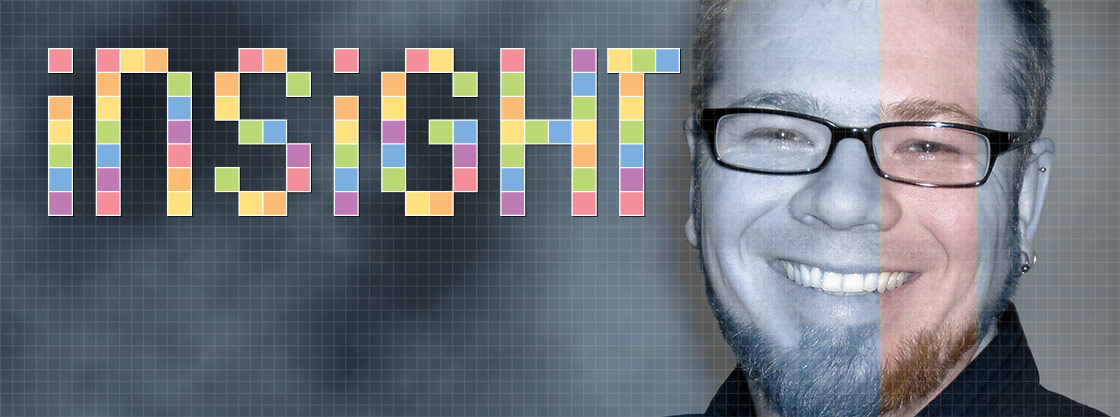
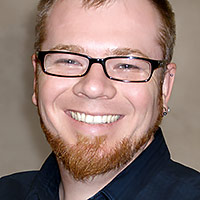
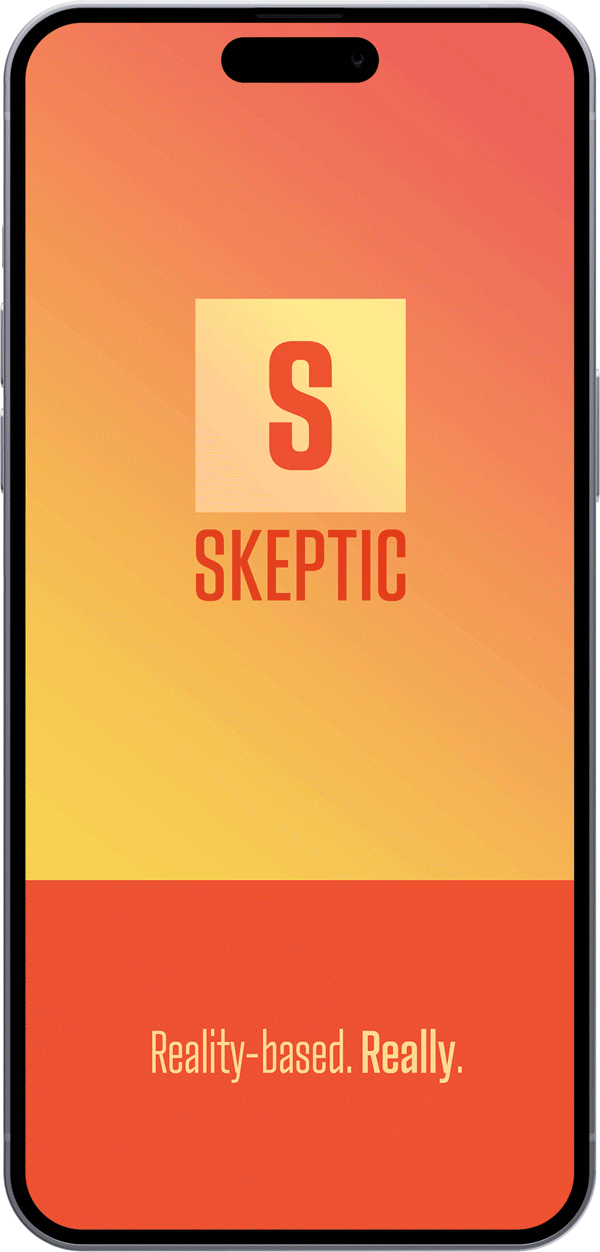

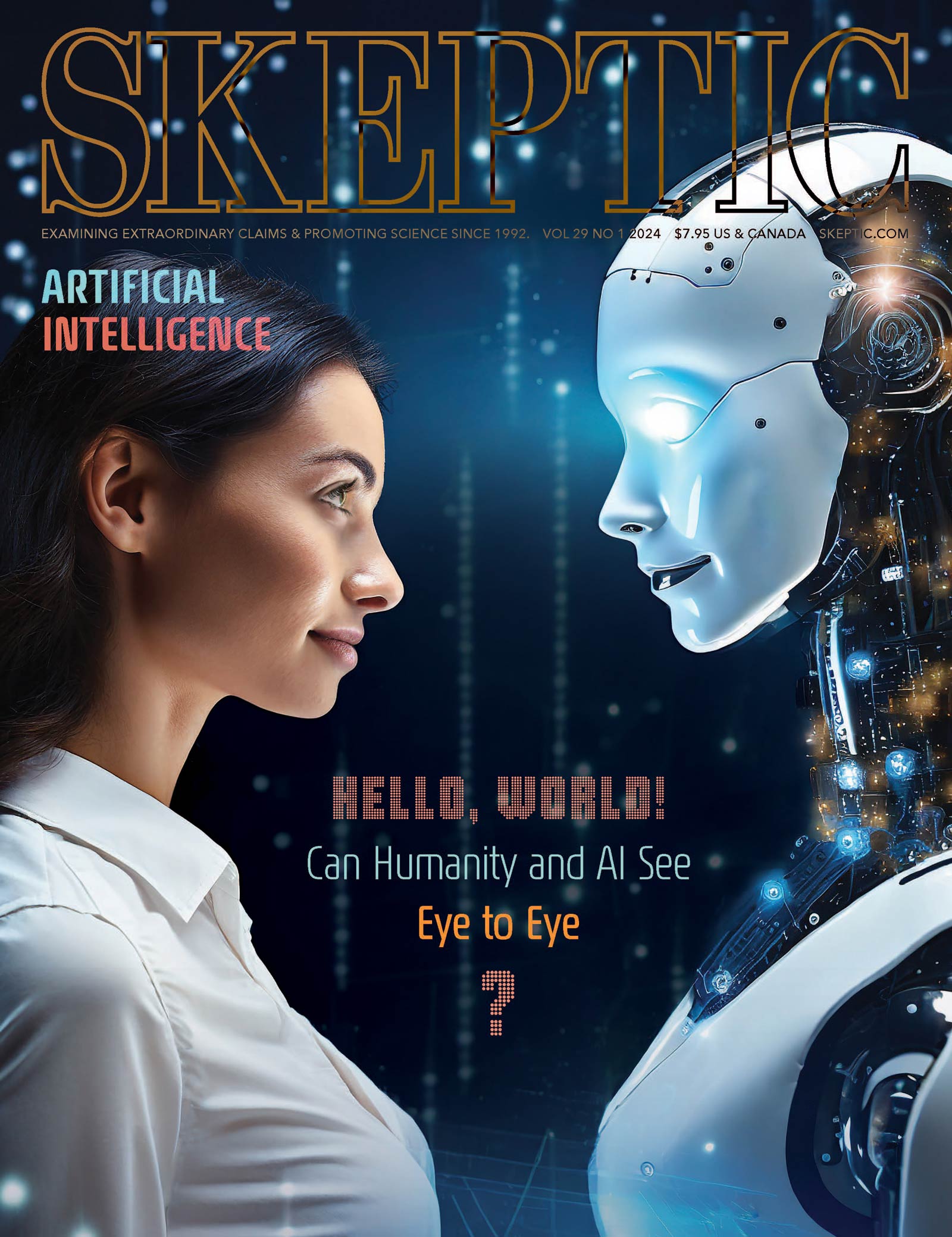

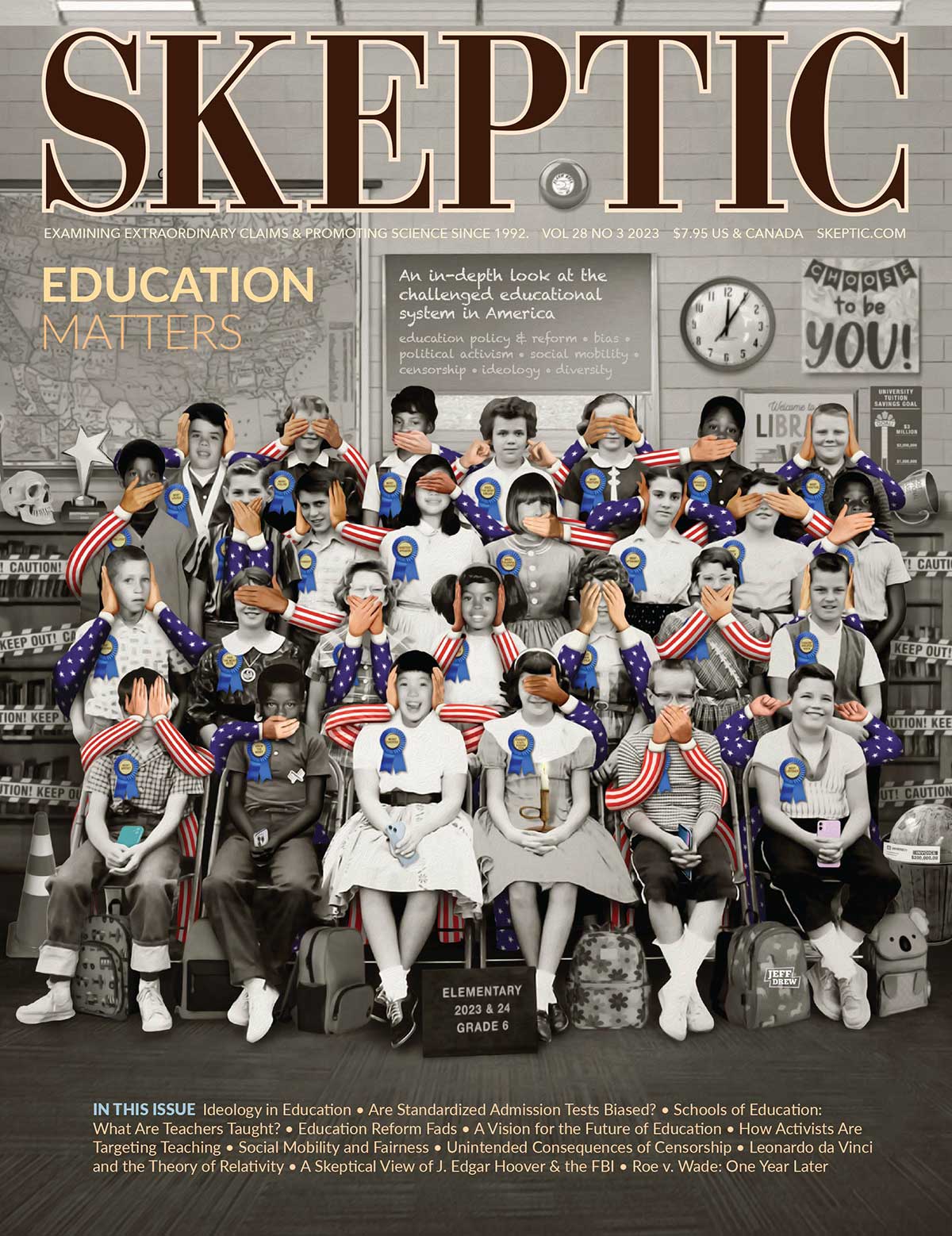
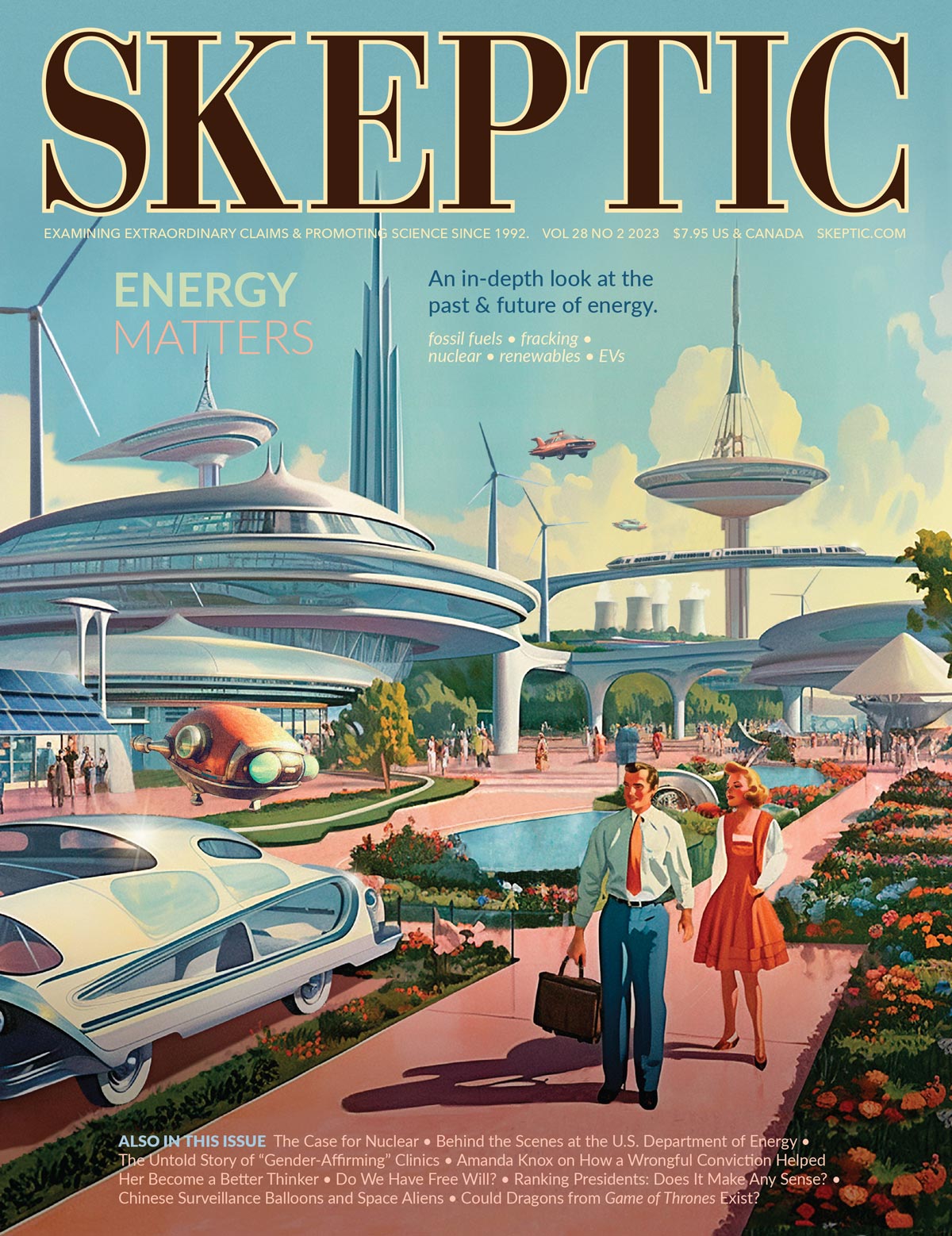
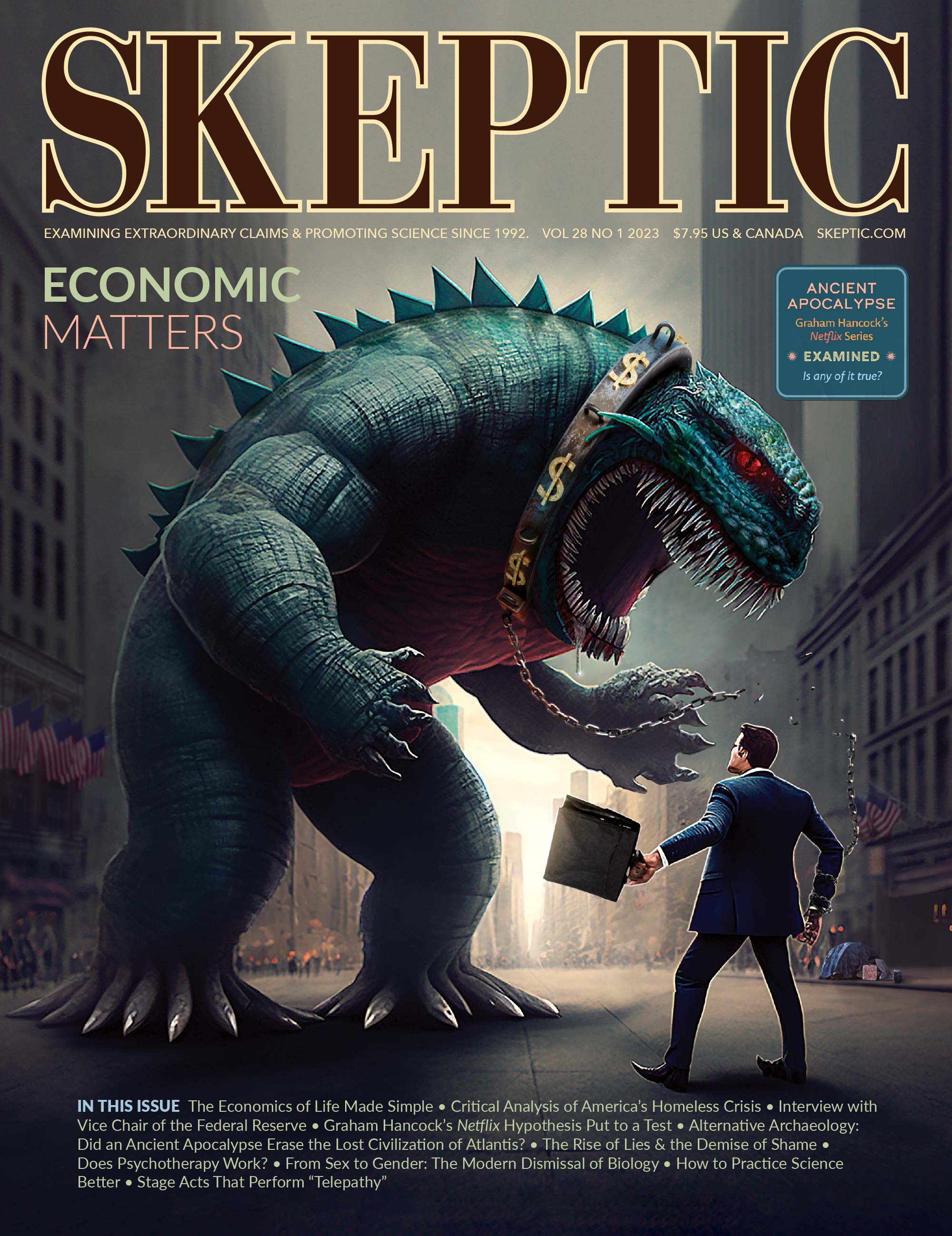
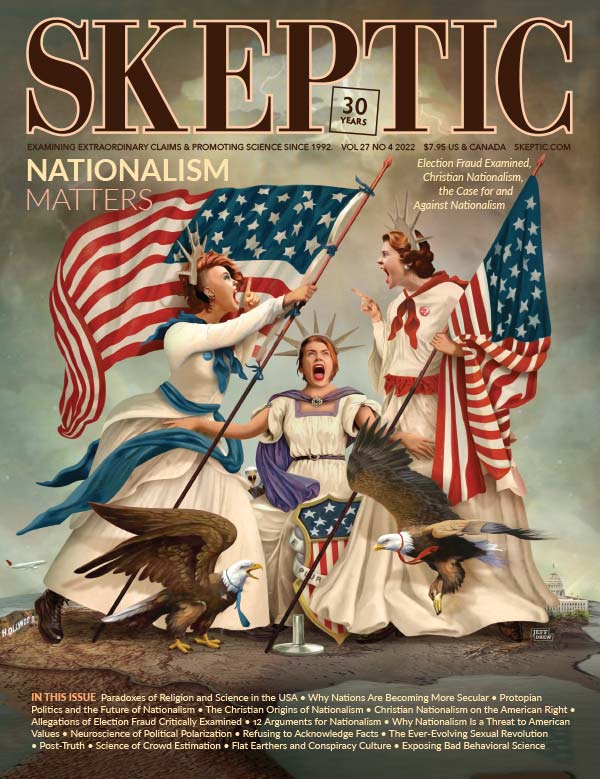
According to Cyrus Reed Teed’s “Koreshanity” theory, we are living on the INSIDE of a spherical surface, not the outside. Thus, sailing around the world does not affect the proof. Teed used the name “Koresh” (Hebrew form of Cyrus), as did David Koresh of the Branch Davidians, because the Persian Cyrus destroyed Babylon and freed the Jews. Willy Ley reported 1932 early rocket test flights in Germany sponsored by an advocate of this theory. Shaw, in the preface to his Back to Methusaleh, argued against Darwinian evolution, advocating instead a Lamarckian or Bergsonian version of consciously willed evolution. My late friend Bob Schadewald became the leading authority on the Flat Earth movement as well as other pseudosciences (creationism, perpetual motion, Velikovskyism). He befriended Charles Johnson, President of the Flat Earth Society, whose flat earth library and archives were destroyed in a fire. Bob’s own extensive collection of flat-earth works and other pseudoscience books went largely to the Univ. of Wisconsin (the “Schadewald Collection”) after his death.
Yes, Bob Schadewald’s research was an important source for me, and it is singled out for mention in the current Junior Skeptic. (The issue quotes him as well). Cyrus Teed receives a spread in the upcoming issue, at press now.
Schadewald’s sister Lois was very generous with her assistance during my Flat Earth research. She deserves the gratitude of all students of the fringe for collecting her brother’s work and making it available to us in Worlds of Their Own: A Brief History of Misguided Ideas—Creationism, Flat-Earthism, Energy Scams, and the Velikovsky Affair (2008).
I found myself admiring Bob Schadewald very much as I got to know his voice through his work. An empathetic view of fringe believers, an impatience for scammers, a specialist concentration on fringe beliefs as a subject matter—all very much after my own heart.
Thanks, Daniel, for unearthing [G] those delightful quotes. Will forward far & wide.
My, my, I did not realize that, according to you, the fringe wing of our dear (new) friends, the Saudis were the ME branch of the Flat Earth Society!
Here’s a link to the astronaut mentioned by Hugo Lindum.
http://www.jsc.nasa.gov/Bios/htmlbios/al-saud.html
Anybody have up-t0-date infor on him?
Thanks, Daniel
Hypatia
(My handle is after a wise and beautiful “pagan” mathematician and philosopher who was a greatly-revered teacher at the Academy of Alexandria in early CE. She was murdered by a mob incited by jealous Bishop Cyril (later canonized????) in the course of the theological wars raging within the early Christian sects.)
See: https://en.wikipedia.org/wiki/Cyril_of_Alexandria)
https://en.wikipedia.org/wiki/Cyril_of_Alexandria
“Believe in” is a special ungrammatical construction; One believes THAT the Earth is round, not IN its roundness. “Believe in” appears in religious statements; It is not used by scientists. When G.B.Shaw refers to “the men who believe in electrons” , presumably physicists, he showed his ignorance of the modern METHODS of discovery. When a reporter asked David Suzuki whether he believed in evolution, he replied, “No. I don’t believe in it. I know it.”
One can forgive those who in the past, held beliefs which, thanks to science and technology, we now know to be erroneous. But even today there are those who will not believe the science on the grounds that theology trumps science. Sheikh Bandar al-Khaibari the head of Saudi Arabia’s religious establishment (the “Grand Mufti”), was caught on video declaring that the sun revolves around the Earth, a clear rejection of all scientific evidence. The remark was on Youtube, but Saudi money walks and talks – and it has now been taken down.
Until recently the Saudi religious authorities were insisting that the world was flat, and that non-believers who said they had been into space were simply liars who were trying to discredit Islam. Finally he shut up when a muslim, a Saudi astronaut confirmed that he too had seen the Earth is indeed a sphere. The danger is these people have influence over the thinking of hundreds of millions of people.